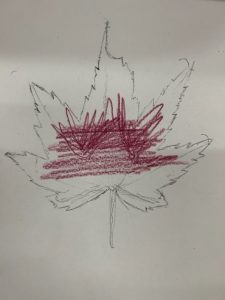Division 5 has been learning how to use watercolour paints. We focus on understanding that watercolour painting is about using pigment suspended in water: the more water the less pigment, and the less water more pigment. Also that “less is more” and that it is always easier to add on then to remove. We have experimented with wet-on-wet and wet-on-dry to see how those techniques create different effects.
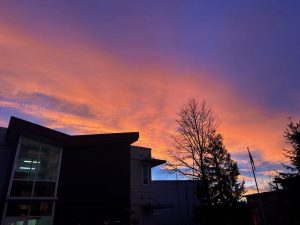
A beautiful sunrise above the fog. UHE, Jan. 7, 2025.
We took inspiration from the spectacular sunrises and sunsets we saw during January and February. We observed how the colours blended together, and how trees and mountains stood in contrast against the bright colours of the sky. We also learned about the “rule of thirds” in our compositions.
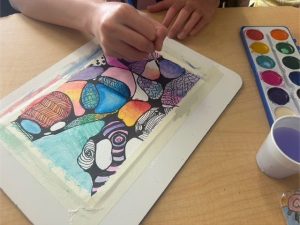 Next, we combined our learning about lines and patterning in art from term 1 with our watercolour skills in Neurographic Art. This project combined the flow of lines, zentangle patterns, and watercolour washes to create abstract pieces. Students decided on how they wanted to use colour to create a cohesive image–warm or cool colours, a colour family, etc. Students were encouraged to experiment with mixing and layering colours to create different effects. I will add more photos as students finish.
Next, we combined our learning about lines and patterning in art from term 1 with our watercolour skills in Neurographic Art. This project combined the flow of lines, zentangle patterns, and watercolour washes to create abstract pieces. Students decided on how they wanted to use colour to create a cohesive image–warm or cool colours, a colour family, etc. Students were encouraged to experiment with mixing and layering colours to create different effects. I will add more photos as students finish.



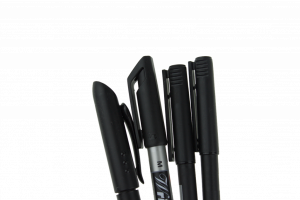
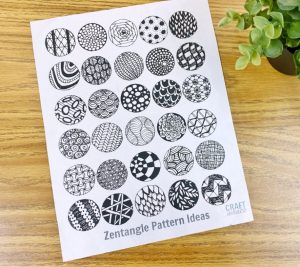

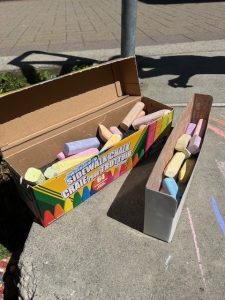 Division 5 planned and created chalk mandalas this week. When I came across this giant box of 64 different chalk colours, I KNEW we had to do this project!
Division 5 planned and created chalk mandalas this week. When I came across this giant box of 64 different chalk colours, I KNEW we had to do this project!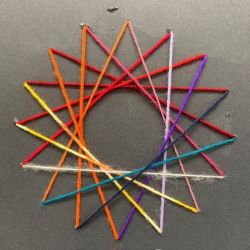













































 The first was a “half ‘n’ half” portrait where one side was part of a lesson in proportionate sketching, and on the other side, students used symbolism to represent who they are and what they like. After reading What Are Your Words? students added descriptive words to their portraits.
The first was a “half ‘n’ half” portrait where one side was part of a lesson in proportionate sketching, and on the other side, students used symbolism to represent who they are and what they like. After reading What Are Your Words? students added descriptive words to their portraits.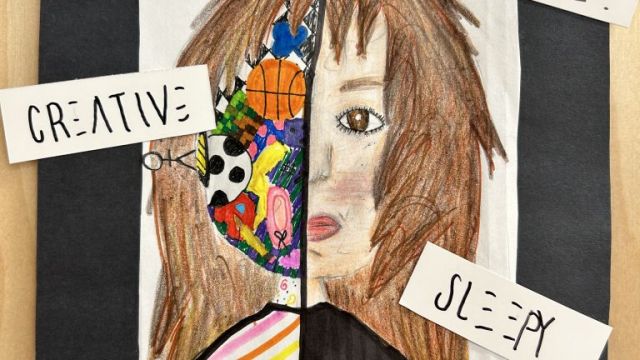


 At this time of year our subject of choice is the beautiful leaves around us. The colours are so vibrant, and the shapes and textures are varied. Each student chose a leaf they liked, and set to work sketching the shape. They had to pay attention to small details like a bit of the leaf that was torn or missing, the shape of the stem, and if the leaf had points or texture around the edge.
At this time of year our subject of choice is the beautiful leaves around us. The colours are so vibrant, and the shapes and textures are varied. Each student chose a leaf they liked, and set to work sketching the shape. They had to pay attention to small details like a bit of the leaf that was torn or missing, the shape of the stem, and if the leaf had points or texture around the edge.
